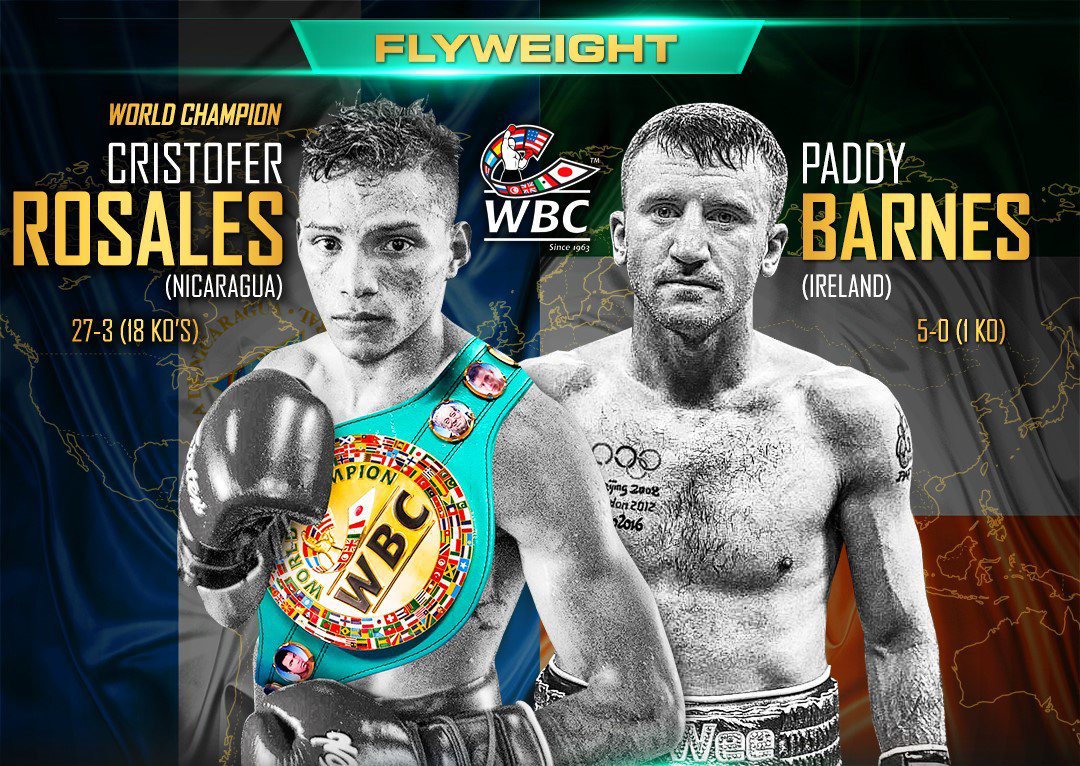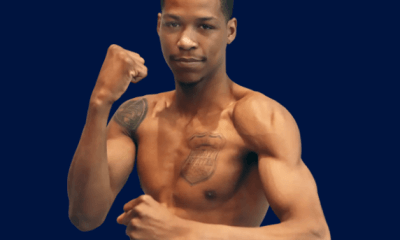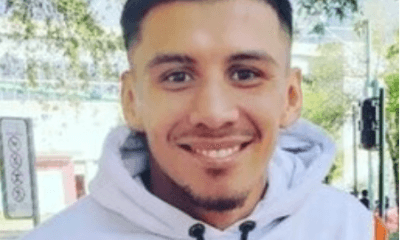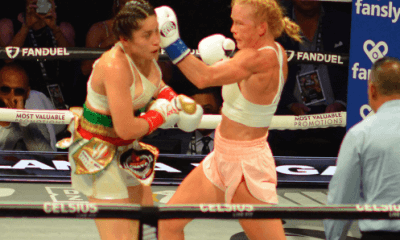Featured Articles
What Are You Up To, Paddy Barnes?

For all the hullabaloo about Tyson Fury and his victim elect Francesco Pianeta in Belfast, Northern Ireland this weekend; for all the “Irish Eyes Are Smiling” rhetoric surrounding the return of Carl Frampton to Windsor Park, where he, too, will defeat an overmatched opponent in Luke Jackson; for all that and the barely concealed excitement with which writers and promoters crane their necks at the futures of both these men – for all that, the most intriguing and competitive fight on this Saturday Night’s big “Norn Iron” card is the rampantly ambitious attempt by Paddy Barnes to win a title-strap against Cristofer Rosales (27-3) in just his sixth contest.
This might not be quite Vasily Lomachenko taking on Orlando Salido in his second fight but Rosales, just twenty-three years old and fighting out of Nicaragua, will not be visiting Northern Irish shores to lose. In fact, the TBRB rank him as the worlds #2 flyweight, second only to veteran Donnie Nietes. Flyweight’s radiance may be on the wane but becoming the second best fighter at 112lbs is no small matter, no matter the drain being inflicted upon the division by super-flyweight, the new home of the fashionable small man. Rosales earned the right, and Barnes will have to take it from him.
Like Lomachenko, Barnes is a storied amateur, a two-time Commonwealth gold medalist and two-time Olympic bronze medalist. Prior to his third swipe at Olympic glory, Barnes turned in a sterling performance in the World Series of Boxing, once controversial for straddling the amateur and professional codes so comfortably, now seen as nothing more (nor less) than a nursery for top-class amateurs who are ready to mount an assault on the professional ranks.
Barnes began his assault on the professional ranks in the traditional way, beating up overmatched, underfed opposition with losing records. In 2017 he staged his fifth fight, his fourth in Belfast, against Elie Quezada (21-6-3) who represented something of a step up, though to nothing like world-level where many were sure Barnes was headed.
Even against his taller, heavier, more experienced, switch-hitting opponent, Barnes looked good that night, feinting with the jab behind organized pressure-footwork, opening up shots to the body with jabs, outs-squabbling his rangy opponent when Quezada decided to throw. In the second, investment in the body paid early dividends as a withering short right-hand to the torso married earlier work done with the left hook to achieve a knockdown and nine-count. A ten count at the very end of the sixth was earned with a left-uppercut to the by then tenderized body of an overmatched opponent.
In between the two knockdowns there were naturally issues, the kind experienced by all raw prospects. For that’s what Barnes is, at thirty-one years of age and carrying an armful of amateur medals; professional fighting is different.
So it should be noted that Barnes repeatedly strayed low, and was so paranoid about his inability to keep his punches north of the borderline he apologized to the referee on one occasion without being warned. He hit Quezada when he was down after the first knockdown. He has issues with temperament that need fights to iron out.
More pertinently he was hit, often, by an opponent who was not afraid to trade with him. Barnes is not a puncher. Quick and accurate, he’s very capable of hurting his opponents but not of turning them away or, as a rule, concussing them. This is problematic and demands careful attention by style, but Barnes does not box like a man who can seek but cannot destroy. He brings speedy pressure, using his quickness and natural balance to unseat an opponent and turn him, all while throwing fast combinations which tantalize between slickness and indeterminate. Like Rocky Marciano, Barnes has a “land and it’ll do” rule of combat, unlike Rocky Marciano he’s not breaking any bones while he does it.
How is Rosales, a legitimately world class opponent, going to handle all this?
A possible clue lies in another fight Quezada lost. Also a Nicaraguan, last March he met Rosales over ten rounds in their shared hometown of Managua. Rosales won in a fun, bruising fight but was unable to stop his countryman despite throwing and landing a large volume of punches; the judges, a little unkindly I thought, awarded only a split decision but it was interesting that Barnes was able to get Quezada out of there and Rosales was not.
Nevertheless, Rosales was at a more advanced stage of his career and was rewarded (only after defeating the unbeaten Italian Mohammed Obbadi in Italy) with a shot at the strap held by the latest Japanese wonderkid, Daigo Higa. 15-0 with fifteen consecutive knockouts, Higa was favored to win that fight but after struggling with the weight was badly beaten by a vicious Rosales.
Much of this was put off on to Higa’s indiscipline on the scales, but Rosales was exceptional that night in Yokohama. Aggressive and direct, he is a big, big flyweight, pushing 5’7 and sporting a reach of nearly 71” by BoxRec. Rosales does little to favor this reach advantage. He is loose with his selected leads, booming over trailing right hands from outside and sometimes shortening up his own jab by stepping in; on the other hand he loves and administers serious punishment on the inside. Rosales is delightfully old-fashioned in his attitude to his physical advantages and is adapt with both hook and uppercut.
He used both of these to his advantage against Higa, positively bullying him in the eighth, before brutalizing him with his left hand in the ninth. His corner pulled him after little more than a minute of that round.
Reviewing this footage, the right pick is absolutely clear: it’s Rosales. Bigger, he is probably the puncher in the fight, certainly the more experienced of the two, and he was equal to the relentless body assault Higa mounted early in their fight; but there’s more.
Rosales does not have a spotless record in the UK. One year before his defeat of Higa, he was being out-boxed by the less talented of the two Selby brothers, Andrew. Andrew Selby weathered a dramatic and forceful storm from the Nicaraguan late, but my impression was that he was good for his points win. Two years previous to this, Khalid Yafai, who holds a strap up at 115lbs, defeated him over eight rounds in another tough scrap.
Rosales travels well but not to the UK, and my impression while checking in with friends who follow the smaller men was that his reputation was firmer abroad than upon these shores.
What to make of this web of intrigue? Has Barnes overstepped in agreeing to fight Rosales so soon based upon a week British rep? Or has Rosales falsely enhanced his status by beating up a weight-drained, crestfallen Higa? Is Rosales too big for Barnes? Or is his propensity for letting wasp-like, whip-crack fighters like Barnes inside a disaster of a style-matchup and one which Barnes, who has slightly faster hands, is primed to take advantage of?
Here’s the truth: I don’t know. I’ve had this fight under the microscope all last week and can’t pick a winner. Just when I think some crucial aspect has been revealed to me it is counter-balanced by some snippet of information from the other camp, or spied on the often single-camera video that spills out of Nicaragua.
I suspect the fight itself will be a thriller though. Both are busy, both have proven punch resistance, both come to fight, both want to mix it up close. The hand that is raised may be the one that is most tempered, the one most ready to shy away from what is natural. Can Rosales spear Barnes on the outside, making him pay for every step? Can Barnes resist the temptation to rush and use his superior speed to close the reach and height gap by staging a sometime counter-punching offense?
With all due love and respect to Tyson Fury, perhaps my favorite active fighter, and Carl Frampton, the man of the moment for the rampant Belfast fans, finding the answer to the above questions is the main reason I’ll be tuning in.
Check out more boxing news on video at The Boxing Channel
-

 Featured Articles3 weeks ago
Featured Articles3 weeks agoAvila Perspective, Chap. 330: Matchroom in New York plus the Latest on Canelo-Crawford
-

 Featured Articles1 week ago
Featured Articles1 week agoVito Mielnicki Jr Whitewashes Kamil Gardzielik Before the Home Folks in Newark
-

 Featured Articles4 weeks ago
Featured Articles4 weeks agoAvila Perspective, Chap 329: Pacquiao is Back, Fabio in England and More
-

 Featured Articles3 weeks ago
Featured Articles3 weeks agoOpetaia and Nakatani Crush Overmatched Foes, Capping Off a Wild Boxing Weekend
-

 Featured Articles2 weeks ago
Featured Articles2 weeks agoCatching Up with Clay Moyle Who Talks About His Massive Collection of Boxing Books
-

 Featured Articles3 weeks ago
Featured Articles3 weeks agoFabio Wardley Comes from Behind to KO Justis Huni
-

 Featured Articles1 week ago
Featured Articles1 week agoMore Medals for Hawaii’s Patricio Family at the USA Boxing Summer Festival
-

 Featured Articles4 weeks ago
Featured Articles4 weeks agoDelving into ‘Hoopla’ with Notes on Books by George Plimpton and Joyce Carol Oates





















